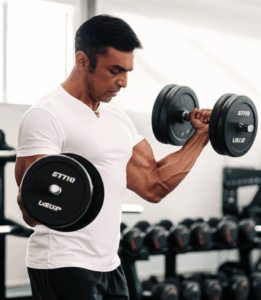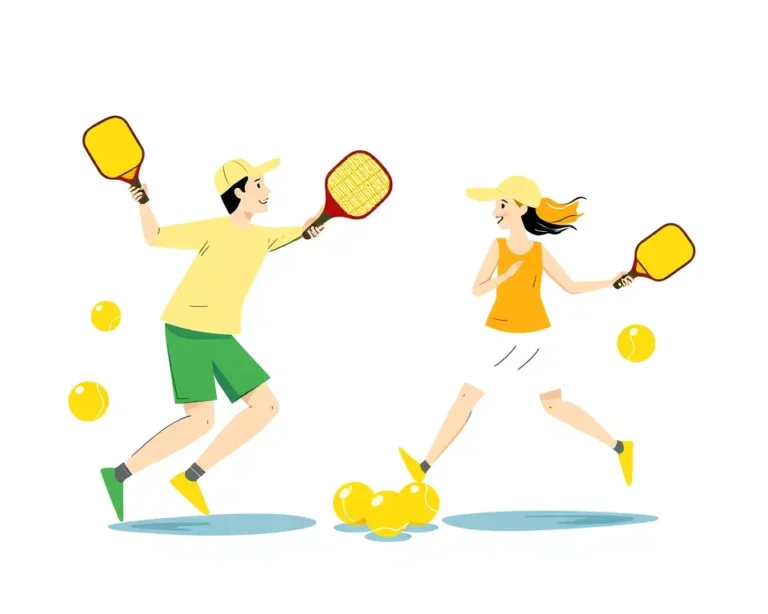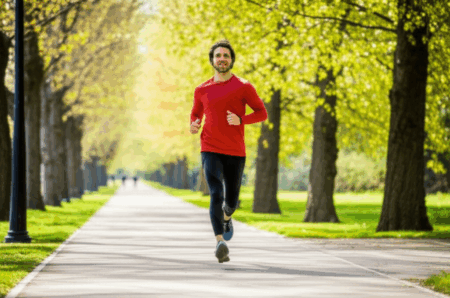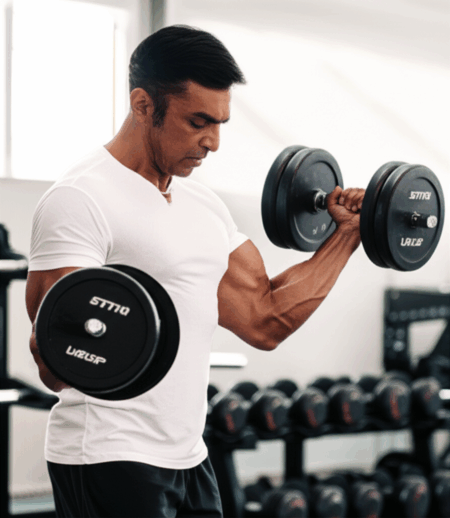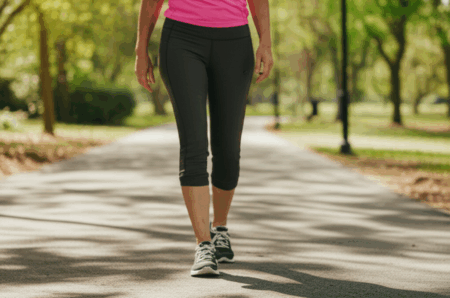Is your gym membership gathering dust? Are you searching for a workout that doesn’t feel like a chore? Look no further than the pickleball court! This rapidly growing sport combines elements of tennis, badminton, and ping-pong, offering a fun, social, and surprisingly effective way to stay in shape. Pickleball can be a brilliant cardio workout and very sociable.
What is Pickleball?
Pickleball is a paddle sport played on a badminton-sized court with a lowered net. Players use solid paddles to hit a perforated plastic ball, similar to a wiffle ball. The rules are simple, making it easy for beginners to pick up, yet the game can become fast-paced and challenging as players improve. Pickleball is suitable for people of all ages and fitness levels and is particularly popular among middle-aged and older adults because it is low impact and easy on the joints.
Pickleball vs. Gym: A Head-to-Head Comparison
So, how does pickleball stack up against a traditional gym workout? Let’s break down the key benefits:
Calorie Burning and Weight Management
Pickleball can be an effective tool for weight loss when combined with a balanced diet and regular play. A 30-minute game of pickleball can burn between 250 to 500 calories, depending on intensity and player weight. An hour of pickleball can help an individual burn 250-350 calories during light play, 400-600 calories during moderate-intensity games, and 700+ calories during highly competitive matches. According to Psychology Today, pickleball fits the bill perfectly as a great workout.
Pickleball Calorie Burn vs. Other Activities:
| Activity | Calories Burned per Minute per Pound of Body Weight |
| ——————– | —————————————————- |
| Pickleball | 0.08 |
| Running (8-min mile) | 0.1 |
| Cycling (14-16 mph) | 0.08 |
| Weight Training (High Intensity) | 0.048 |
| Tennis (Average Intensity) | 0.056 |
These numbers show that pickleball burns almost as many calories as running and certainly more than lifting weights. It’s roughly on par with cycling.
Cardiovascular Health
Pickleball is an aerobic exercise that helps improve lung function, control blood sugar levels, regulate blood pressure, and improve cardiovascular conditioning. The sport involves fast-paced movements and short bursts of activity, which help increase heart rate and improve circulation. Regular pickleball play can help lower blood pressure and reduce the risk of heart disease, making it an ideal cardiovascular workout. A study published in the Journal of Aging and Physical Activity found that older adults who played pickleball three times a week for six weeks saw significant improvements in heart rate and blood pressure.
Muscle Strengthening and Endurance
Pickleball is a full-body workout that builds strength, agility, and endurance. It engages a variety of key muscles, including the quadriceps, hamstrings, gluteus maximus, abdominal muscles, shoulder muscles, and forearm muscles.
Muscles Worked in Pickleball:
- Lower Body: Quadriceps, hamstrings, glutes, calves
- Core: Abdominals, obliques, lower back
- Upper Body: Deltoids, trapezius, biceps, triceps, forearms, wrists
Pickleball helps tone the quadriceps, hamstrings, glutes, abs, and arm muscles. The game improves muscle strength and balance, which results in better performance on the court.
Flexibility and Balance
The dynamic nature of pickleball, with its frequent lunging, reaching, and quick directional changes, helps improve flexibility and balance. This can lead to better joint mobility and a reduced risk of injuries. Improved balance and coordination are especially beneficial for older adults, making pickleball a fantastic choice for those looking to stay active and agile.
Low-Impact Exercise
Pickleball is a low-impact sport, making it a great way to get movement in and maintain healthy bones, joints, and muscles. It’s easier on the joints compared to sports like tennis or running because the smaller court size means players don’t have to travel as far to keep the ball in play, reducing the strain on their knees, hips, and ankles. The underhand serve also minimizes muscle and joint stress, making pickleball an ideal sport for all ages.
Mental and Social Benefits
Exercise is not only good for your body but also boosts brain health. The benefits of routine physical activity on your brain include better sleep, improved cognition (ability to think, remember, and process information), and reduced risk of depression and anxiety. Pickleball is brilliant for meeting new people. It provides a platform for meeting new people, fosters friendships, and strengthens existing relationships. Engaging in this sport can increase social interaction, providing opportunities to build a strong sense of community.
Pickleball offers a way to combat loneliness by providing regular opportunities for social interaction and helps to build connections and foster a sense of community.
Optimizing Your Pickleball Workout
To maximize the fitness benefits of pickleball, consider these tips:
- Play Regularly: Aim for at least 3-4 times per week.
- Increase Intensity: Challenge yourself by playing faster-paced games or against more skilled opponents.
- Stay Active: Maintain activity throughout the game, avoiding prolonged periods of inactivity to sustain calorie expenditure.
- Warm-up and Cool-down: Prepare your body for exercise with dynamic stretches and cool down with static stretches.
- Strength Training: Incorporate exercises like squats, lunges, and push-ups to build strength in all the right places.
- Focus on Footwork: Practice agility drills to improve your speed and court coverage.
Who Should Play Pickleball?
Pickleball is a versatile sport suitable for a wide range of individuals:
- Beginners: The easy-to-learn rules and low impact make it a great starting point for those new to exercise.
- Older Adults: The social and physical benefits are particularly appealing to seniors looking to stay active and connected.
- Those Seeking a Fun Workout: If you find traditional workouts boring, pickleball offers an engaging alternative.
- People with Joint Issues: The low-impact nature of pickleball makes it a good option for those with arthritis or other joint pain.
Potential Drawbacks
While pickleball offers numerous benefits, it’s essential to be aware of potential drawbacks:
- Risk of Injury: Like any sport, pickleball carries a risk of injury, especially if you don’t warm up properly or overexert yourself.
- Not a Complete Strength Training Program: While pickleball works various muscles, it may not be sufficient for building significant strength. Supplement with strength training exercises.
- May Require Additional Cardio: Depending on your fitness goals and intensity level, you may need to supplement pickleball with other forms of cardio exercise.
The Verdict: Is Pickleball a Gym Substitute?
Pickleball can be a fantastic alternative to the gym, offering a comprehensive workout that combines cardio, strength, flexibility, and social interaction. While it may not completely replace a structured strength training program, it provides a fun and engaging way to stay active, burn calories, and improve your overall health. So, ditch the treadmill and grab a paddle – your body (and your social life) will thank you!



